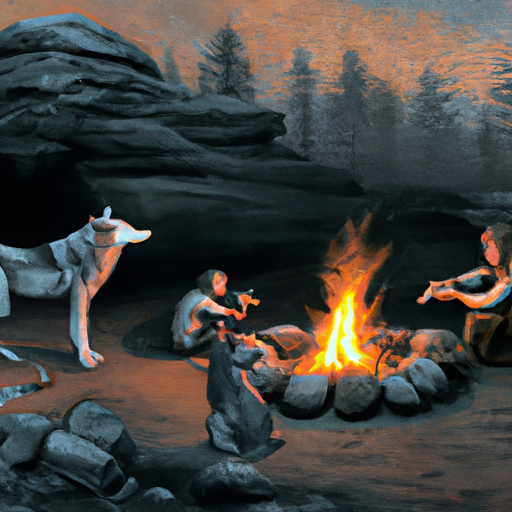Introduction
Just imagine, you’ve been transported back in time, thousands of years ago. You’re in a world where civilizations are just beginning to emerge. You’re not alone. There’s a creature beside you, a canine, your companion. This is not a fantasy, but a glimpse into the past when dogs were first domesticated by humans.
The Beginning of a Beautiful Relationship
The bond between humans and dogs is ancient. Experts believe dogs were first domesticated between 20,000 to 40,000 years ago. But how did these wild wolves become our beloved pet dogs?
The most popular theory suggests that wolves began following human hunting parties, drawn to the leftover carcasses. Over time, the less aggressive wolves that could tolerate the presence of humans had a better chance of survival. These wolves began to evolve to become more docile, eventually leading to the domesticated dogs we know and love today.
- 20,000 – 40,000 years ago: Wolves began following human hunting parties
- Over many generations: Less aggressive wolves survived and bred
- Eventually: These wolves evolved into domesticated dogs
Evidence from Archaeology and Genetics
Archaeological findings provide fascinating evidence of early dog domestication. The remains of dogs have been found buried alongside humans dating back almost 14,000 years, suggesting that even in these early times, dogs held a special place in human society.
Genetic studies also offer insights into when dogs were domesticated. By comparing the DNA of modern dogs to their closest wild relative, the grey wolf, scientists have been able to trace the lineage of dogs back thousands of years.
| Archaeological Findings | Genetic Evidence |
|---|---|
| Dog remains found buried with humans dating back 14,000 years | DNA comparison between modern dogs and grey wolves traces lineage back thousands of years |
The Role of Dogs in Human Society
Over the centuries, dogs played vital roles in human societies. Initially, they were likely used for hunting and protection. As societies developed, so did the roles of dogs. They became herders, pullers of sleds, and even sacred religious symbols.
- Hunting partners
- Protectors
- Herders
- Sled dogs
- Religious symbols
Dogs Today: Man’s Best Friend
Today, dogs are cherished members of our families. They provide companionship, emotional support, and even serve in roles such as guide dogs or therapy dogs. The bond between humans and dogs is a testament to the thousands of years of companionship that began when dogs were first domesticated.
- Companion animals
- Emotional support animals
- Service dogs
- Therapy dogs
Frequently Asked Questions
When were dogs first domesticated?
Dogs were likely first domesticated between 20,000 to 40,000 years ago, according to archaeological and genetic evidence.
How did wolves evolve into dogs?
The theory is that wolves that were less aggressive and could tolerate the presence of humans had a better survival rate. Over many generations, these wolves evolved into domesticated dogs.
What roles have dogs played in human societies?
Dogs have played many roles in human societies over the centuries, from hunting partners and protectors to herders and sled dogs. Today, they are often cherished family members and can serve as emotional support animals or therapy dogs.
What evidence is there for early dog domestication?
Archaeologists have found the remains of dogs buried with humans dating back almost 14,000 years. Genetic studies comparing the DNA of modern dogs with that of grey wolves have also traced the lineage of dogs back thousands of years.
How have dogs’ roles in society changed over time?
As human societies have evolved, so have the roles of dogs. While they were initially likely used for practical purposes such as hunting and protection, they have also served as herders, sled dogs, and religious symbols. Today, many dogs serve in roles such as therapy or service animals, in addition to being beloved pets.



